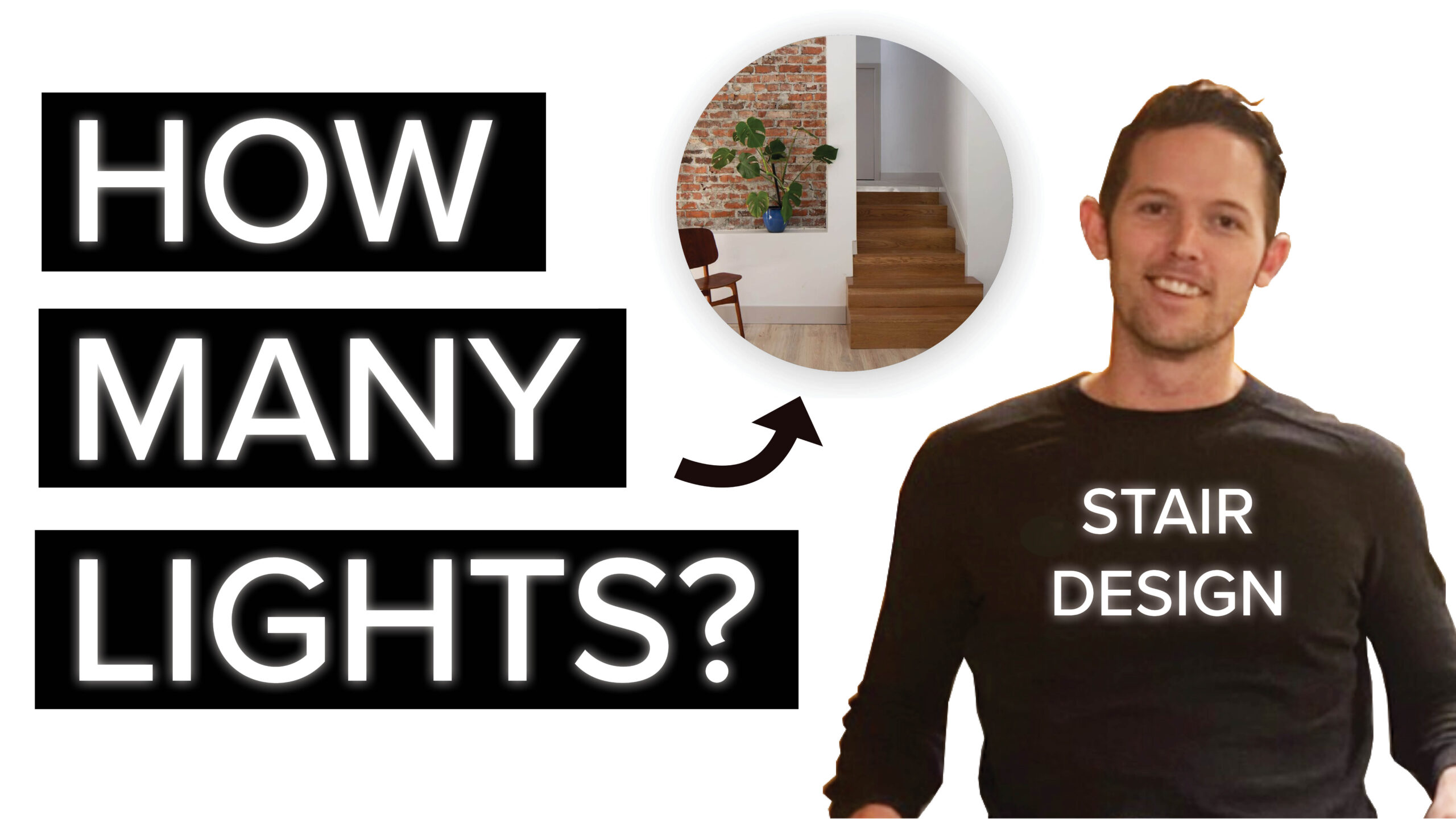Your cart is currently empty!
How Much Light for a Stair? Video Tutorial

? How much lighting does a staircase need? In this video, we break down the essential lighting calculations for a stair, following guidelines from the Illuminating Engineering Society of North America (IESNA) and the Department of Energy (DOE). Whether you’re an interior designer, architect, or homeowner, this guide will help you achieve safe, stylish, and effective staircase lighting.
? What we cover:
✔️ How to calculate the required lumens for a stair based on square footage
✔️ Choosing the right foot-candle levels for stairs and landings
✔️ Selecting step lights, recessed lighting, and pendant lights
✔️ Best practices for lighting placement and alignment
✔️ How to balance functional lighting with aesthetics
? Find the right lights for your project: [Affiliate link or resource]
? Need help with a lighting plan? Drop a comment below!
? Tools Used in This Video:
✅ Lumens Calculator
✅ Recessed & Step Lights Selection
? Subscribe for more interior & architectural lighting tips!
Optimized Transcript: How Much Light Will You Really Need for Your Stairway Design?
[00:00] Introduction
Hey everyone! Today, we’re designing the lighting for a staircase, and I’ll walk you through how to determine the right amount of light needed for safe and effective illumination. Whether you’re an interior designer, architect, or homeowner, this guide will help you create a functional and beautiful stair lighting plan.

[00:15] Step 1: Calculating Square Footage & Lighting Needs
The first step in staircase lighting design is to determine the square footage of the stair and surrounding areas. In this case, I’m including the hallway and stair landing, bringing the total to 111 square feet.
Using a lighting calculator, I’m selecting medium finishes, which is a common scenario. According to the Illuminating Engineering Society of North America (IESNA) and the Department of Energy (DOE), the recommended lighting level for stairs is 5 foot-candles.
[01:00] Step 2: Identifying Key Lighting Placements
Before selecting specific lights, I like to analyze the stair’s architecture to determine the best placement. Ideally, we align lighting with visual cues like windows, landings, and stair treads.
For this project, I’ll focus on:
✅ Step lights (wall-recessed lights) along the stair treads
✅ Recessed downlights at the landings
✅ A pendant light for decorative and functional lighting

[02:30] Step 3: Choosing the Right Stair Lights
Now, let’s start placing lights:
✔️ Wall-recessed step lights for even illumination along the stair treads
✔️ Recessed downlights for the landing
✔️ A pendant light that serves as a visual statement piece and adds ambient lighting

[04:00] Step 4: Checking Lumens & Brightness Levels
Next, let’s check if our selected stair lighting setup meets the required lumens:
- The stair needs 1118 lumens
- Our two recessed downlights provide 2000 lumens
- The six step lights contribute 408 lumens
- The pendant light should be at least 300 lumens to ensure balanced lighting
[06:00] Step 5: Refining the Stair Lighting Plan
By refining our calculations, we see that if we exclude the hallway, we only need 746 lumens for the stair treads and landing. The step lights and pendant light combination ensures proper illumination and visual appeal.
[07:00] Finalizing the Lighting Selection
At this point, I would collaborate with the interior designer, architect, or homeowner to choose a pendant light that meets both aesthetic preferences and lighting needs. It needs to provide at least 300 lumens—which is easy to find in various modern and classic fixture options.

[07:45] Conclusion
That’s how I approach staircase lighting design! By following these steps, you can achieve a well-lit, stylish, and code-compliant stairway.
? What’s your favorite stair lighting style? Drop a comment below!
? Subscribe for more lighting design tips! See you in the next video!
Works Cited: Quality Stairway Lighting
Duncan, Steve. “Why Is It Important to Do a Lighting Calculation?” Lighting Design Insights. [LightingJUMP.com, https://www.lightingjump.com/how-many-lights-forest-vibe].
The author emphasizes the necessity of conducting lighting calculations to ensure effective lighting design in various spaces. He cites the Illuminating Engineering Society of North America (IESNA) and the International Association of Lighting Designers (IALD) for their established footcandle targets that help determine appropriate lighting levels. Duncan also mentions the National Renewable Energy Laboratory (NREL) and the Department of Energy’s publicly available footcandle targets, which he uses for residential projects.
He shares a personal anecdote about the complications that arise from inadequate lighting, stressing the importance of precise calculations to avoid costly adjustments and excessive spending. The lighting estimator featured on his webpage is designed to assist clients in achieving optimal lighting without overspending.
References – Quality Residential Lighting Design
- Duncan, Steve. “Why Is It Important to Do a Lighting Calculation?” Lighting Design Insights. .
- National Renewable Energy Laboratory. “Light Emitting Diodes (LEDs) in Residential Lighting.” NREL/TP-53467. 2012. https://www.nrel.gov/docs/fy12osti/53467.pdf.
- Illuminating Engineering Society. “Standards.” https://store.ies.org/individual-standards/?v=0b3b97fa6688.
- International Association of Lighting Designers. “About the IALD.” https://iald.org/IALD/IALD/About/About-


